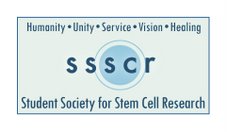| Orthopedic Applications of the Multi-Lineage Progenitor Cell (MLPC) | What is the MLPC?  MLPC are a phenotypically and genetically unique population of human stem cells recovered from post-partum umbilical cord blood that are capable of extensive self-renewal and multi-lineage differentiation including cells representing all the commonly described embryonic layers. How could these cells contribute to the development of therapeutics for orthopedic and bone degenerative diseases? In order to overcome the limitations of traditional structural engineering approaches to orthopedic and osteo-degenerative diseases, new therapeutics in current orthopedic practice and in-development are combining state of-the-art structural engineering and metallurgy, as well as new bio-compatible materials: osteo-conductive (support the colonization by bone-forming cells and provide raw materials for new bone formation) and osteo-inductive (stimulate new bone growth) compounds, and now cells (which have both osteo-conductive and osteo-inductive properties). One of the current therapeutic strategies being developed revolve around the integration of osteo-conductive (extracellular matrixes, de-mineralized bone matrix) and osteo-inductive materials (cells, Bone morphogenic protein (BMP). MLPC present a unique cellular opportunity for this application in their unique clonability, controllability, expansibility, ability to remodel osteo-conductive materials, as well as their osteo-inductive and -conductive properties. The ability of MLPC to develop into osteo-inductive osteoblasts, endothelial cells which contribute to vascularization of bone tissue and stromal cells known to aid in blood stem cell support could provide an enhanced pathway to accelerated annealing, integration, and load-bearing ability of grafts. Combining osteo-conductive materials with MLPC would mean that cells would no longer have to colonize the graft from outside because the osteo-inductive cells would be integral to the graft prior to implantation. MLPC have been found to be biologically  compatible with a number of materials commonly used in Orthopedic medicine as well as other materials, including tri-calcium phosphate, hydroxyapatite, alumina, titania, collagen, laminin, fibronectin, and cellulose. This compatibility provides a wide platform towards the co-development of MLPC and optimized biocompatible structures specific for each differentiated cell type. compatible with a number of materials commonly used in Orthopedic medicine as well as other materials, including tri-calcium phosphate, hydroxyapatite, alumina, titania, collagen, laminin, fibronectin, and cellulose. This compatibility provides a wide platform towards the co-development of MLPC and optimized biocompatible structures specific for each differentiated cell type. For more information on the MLPC and its potential applications please contact a BioE Business Development Manger | Join BioE at these upcoming tradeshows: Termis EU September 4 - 7, 2007 London, England http://www.termis.org/eu2007/index.php BIO Mid-America Venture Forum September 24 - 26, 2007 Milwaukee, Wisconsin http://www.midamerica.bio.org The Burrill Stem Cell Summit October 2 - 3, 2007 Boston, Massachusetts http://www.thestemcellsummit.com Featured Article in Burrill Stem Cell Report, Fall 2007- "The Multi-Lineage Progenitor Cell: An Enabling Tool for Developing Cellular and Biologic Therapies" by Carol Buchert, MT (ASCP), Vice President of Operations, Sales/Marketing, BioE, Inc. World Congress on Regenerative Medicine October 18 - 20, 2007 Leipzig, Germany http://www.regmed.org AABB Annual Meeting & TXPO 2007 October 20 - 23, 2007 Anaheim, California http://www.aabb.org NASS : National Association of Spine Specialists October 23 - 27, 2007 Austin, Texas http://www.spine.org/am07/index.html American Society of Hematology Annual Meeting (ASH) December 8 - 11, 2007 Atlanta, Georgia http://www.hematology.org | | | BioE Employee Wins Roche Contest | | In July of 2007 Roche Applied Sciences sent a direct mailer to customers that were noted to utilize qPCR in their labs. The direct mailer directed customers to read through a brochure/flyer on Roche Applied Sciences Gene Expression solutions (LightCycier 480, MagNA Pure, manual NAPI, qPCR reagents, and UPL). The recipients were then asked to go online and answer 4 "simple" questions about the brochure/flyer where those that answered all 4 questions correctly were entered into a drawing for sponsorship to the scientific meeting of their choice. The prizes were $1000 (1st place), $750 (2nd place), and $500 (3rd place). Mona Schmidt, a Molecular Biology Scientist for BioE won the third place prize. Mona came to BioE from 3M bringing years of experience in genetics and biotechnology. Mona is currently the head of the Molecular Analysis Laboratory at BioE whose primary focus is to analyze changes in gene expression of the Multi-Lineage Progenitor Cell as it moves along the path of chosen differentiations. Congratulations to Mona and thanks to Roche Applied Sciences for sponsoring attendance to an upcoming scientific meeting. | |
| |  | | Is your cord blood bank interested in improved cell recovery? | | If so, click here to learn what PrepaCyte®-CB cord blood processing equipment can do for you. | |
| | |


